Solar System
Contents
Our solar system is but a speck in the cosmic ocean that surrounds us. Because of our current technology, much of what we know about the Universe and our galaxy, the Milky Way, comes from our knowledge and exploration of our own solar system. But what exactly is a solar system? The basic definition of solar system is a group of celestial bodies that orbit around a star, however, there is much more involved than what that basic definition implies.
Where it began
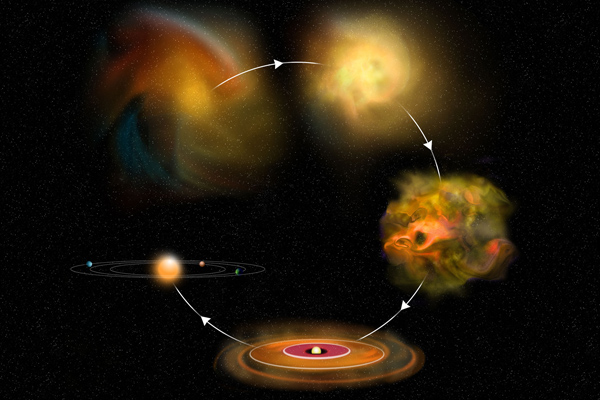 Formation of the Solar System / nrao.edu
Formation of the Solar System / nrao.eduOur solar system was created approximately 4.5 billion years ago. It was a single dense gaseous cloud filled with dust and various elements that were spurred into action to collapse in on itself. It has been theorized that this was due to the shockwave of a nearby supernova, but we currently do not know for certain if this is true. Regardless of the catalyst for this occurrence, our solar system was created. During the process of this collapsing cloud, a rotational spin began that created a gravitational effect, drawing in dust particles and gasses which mashed together from the intense pressure and began to form a solid mass. This solid mass continued to grow until it consumed as much of the surrounding material as it was able, it begins to develop its own rotation creating a gravitational pull of its own.
Once the mass has reached its peak size a process called thermonuclear fusion occurs and the mass ignites and our sun is born. The heat from this process creates what is called solar winds which "blows" the remaining cloud and debris away and the gravitational pull begins to tug at the masses that have formed in the remaining part of the cloud. These masses during this process have also developed their own gravity spin and their gravity pushes at the pull of the sun. As a result, they begin to rotate in an elliptical course around the sun. This is how they obtained their current orbit.
See also: Evolution of the Solar System
Current State of Things
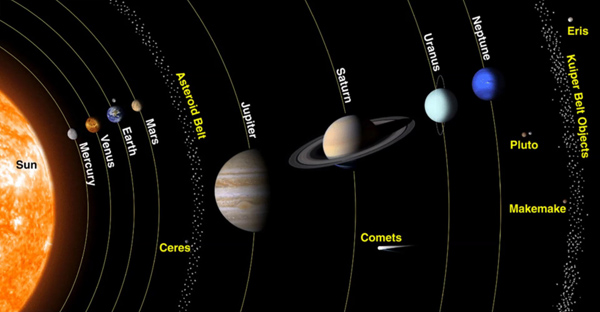 Configuration of the Solar System / ytimg.com
Configuration of the Solar System / ytimg.comCurrently, that we know of, our solar system consists of our sun, 8 planets, 5 dwarf planets, an asteroid belt, the Kuiper Belt, the Oort Cloud, hundreds of comets, and over a hundred satellites and moons. Each of these objects has their own distinctive features and further exploration of these objects has been planned for the future. Here is what we know so far.
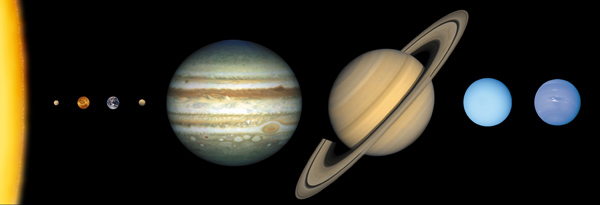 Primary Planets to scale / nasa.gov
Primary Planets to scale / nasa.govThe 8 planets of our solar system consist; of 4 terrestrial planets which are closest to the sun (Mercury, Venus, Earth, and Mars), 2 gas giants (Jupiter and Saturn), and 2 ice giants (Uranus and Neptune). Most of the primary planets are surrounded by satellites and moons with Jupiter and Saturn containing the most as to their close proximity to asteroids and their strong gravitational pull. Earth, our world, is the only planet at a perfect distance from the sun to sustain life. Mars is second in line on this and is believed to have at one point been on the same path as Earth in creating a viable living condition for life to develop. Plans to colonize Mars in the future have been put into place along with the possibility of terraforming the planet.
 Dwarf Planets with Moons / solarstory.net
Dwarf Planets with Moons / solarstory.netOur 5 dwarf planets are Ceres, Pluto, Eris, Haumea, and Makemake. These planets have all the features of our primary planets, but they are very small and only reach the minimal requirements for planet classification. These "miniature" planets all reside in the Kuiper belt beyond Neptune with the exception of Ceres, which is located in the asteroid belt between Jupiter and Mars and Sedna which lies on the outer edge of the Oort Cloud.
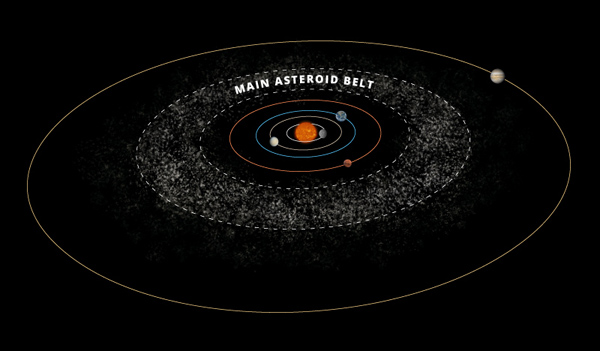 Asteroid Belt Illustration / laurinemoreau.com
Asteroid Belt Illustration / laurinemoreau.comThe asteroid belt, as the name implies, is a stretch of asteroids which is located between Jupiter and Mars. They range from the size of a speck of dust to several miles long. Some meet with several of the classifications of a planetary object with one exception, their irregular shape. Ceres is still considered our largest asteroid, but because of its spherical shape, it is officially classified as a dwarf planet.
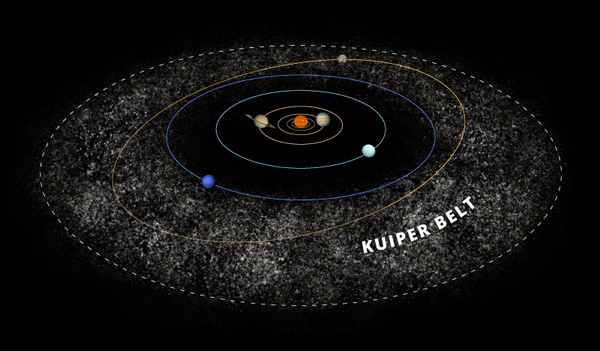 Kuiper Belt Illustration / laurinemoreau.com
Kuiper Belt Illustration / laurinemoreau.comThe Kuiper belt is a stretch of area beyond Neptune that contains 100's of celestial objects that have yet to be fully identified. Dwarf planets Pluto, Eris, Haumea, and Makemake are located within this belt that has been classified so far, but 100's more objects are sitting on a list to be observed as possible dwarf planets at this time. Some of our comets are believed to come from this area and are typically short period type comets.
There is little information about the Oort Cloud available. Because it is located in the furthermost reaches of our solar system, most of what we know is based on theory and no concrete proof. The Oort cloud is believed to be made up of what was left during the formation of our solar system and due to the distance from the sun, it is made up of mostly icy objects. It is believed there may be trillions of celestial objects within this cloud and the majority of our long period comets came from here.
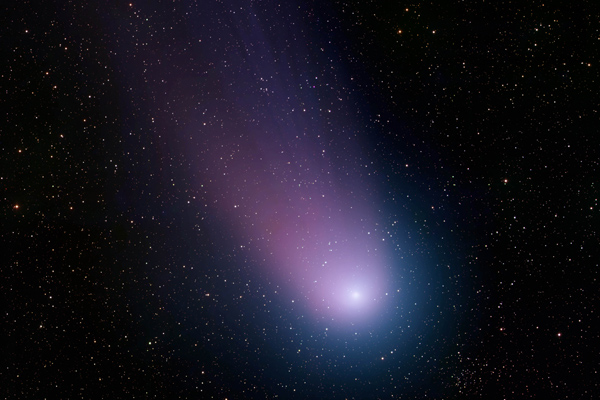 Comet Neat / solarviews.com
Comet Neat / solarviews.comThere are two types of comets that prevail in our solar system, short period and long period comets. Short period comets are seen every few years, less than 200 years. Long period comets are seen only once every 200 years or more. These objects are primarily made up of ice and gasses that when they approach the sun, there outer shell begins to melt, giving them their fiery ball with a tail view in the sky. Comets are believed to come primarily from the Oort cloud, most especially the long period comets, but some are believed to come from the Kuiper Belt as well.
As much as we know about our solar system, there are still areas in which we are unable to reach. Missions have been implemented to find out more about our solar system, but could take decades before the information is available for scientist to observe. Probes such as Voyagers 1 & 2 have been sent out to the far reaches of our solar system to observe what is out there.
Many of the planetary objects discovered in recent years have come from these projects, Spitzer Space Telescope and Kepler are two fairly recent NASA projects for exploration of our system and beyond which have found quite a bit of information since their launch. Scientists strive for the day that manned missions into deeper space is available but until then, they must rely on in Earth instruments, near Earth instruments, and probes to gain a better understanding of what is out there.
Video Gallery

-
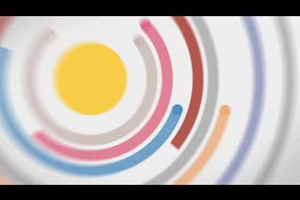 The Solar System - our home in space
The Solar System - our home in space
-
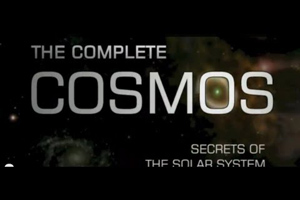 Secrets of the Solar System
Secrets of the Solar System
-
 Our Solar System is a vortex
Our Solar System is a vortex
-
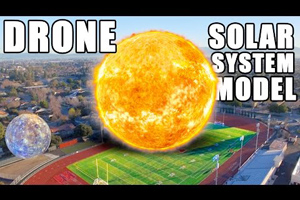 DRONE Solar System Model
DRONE Solar System Model